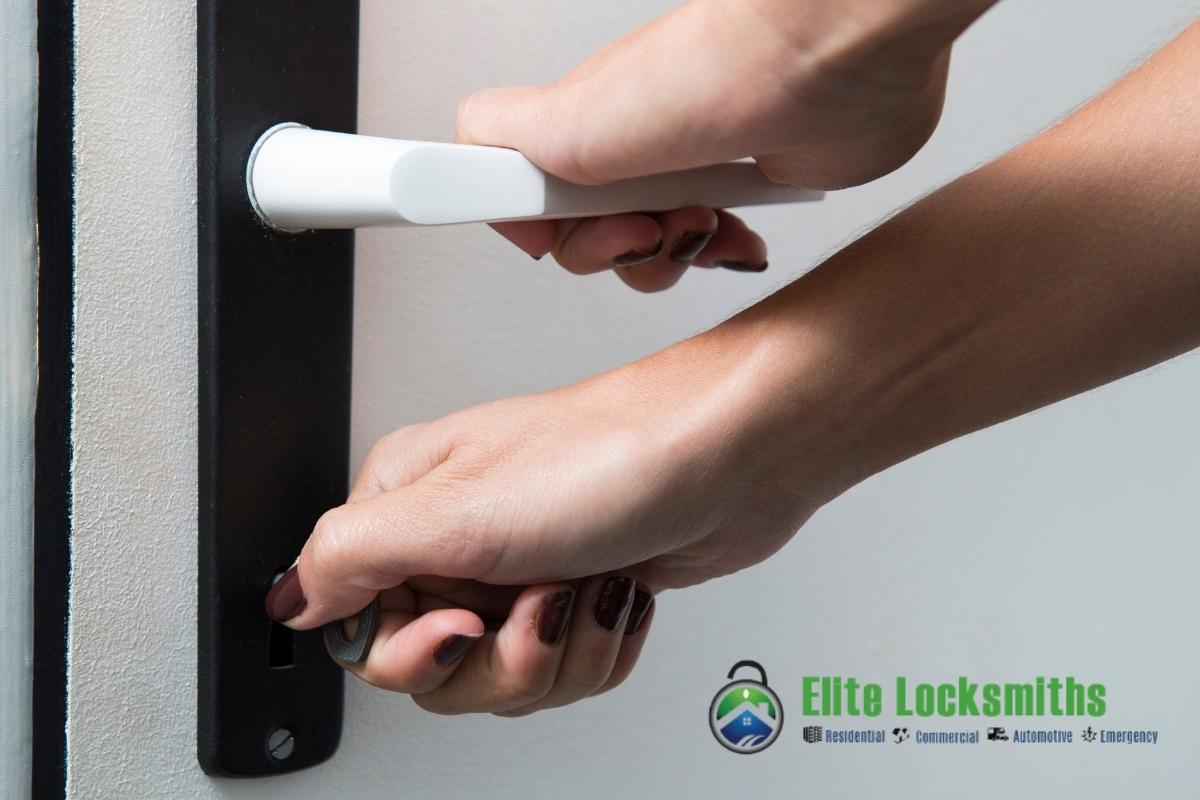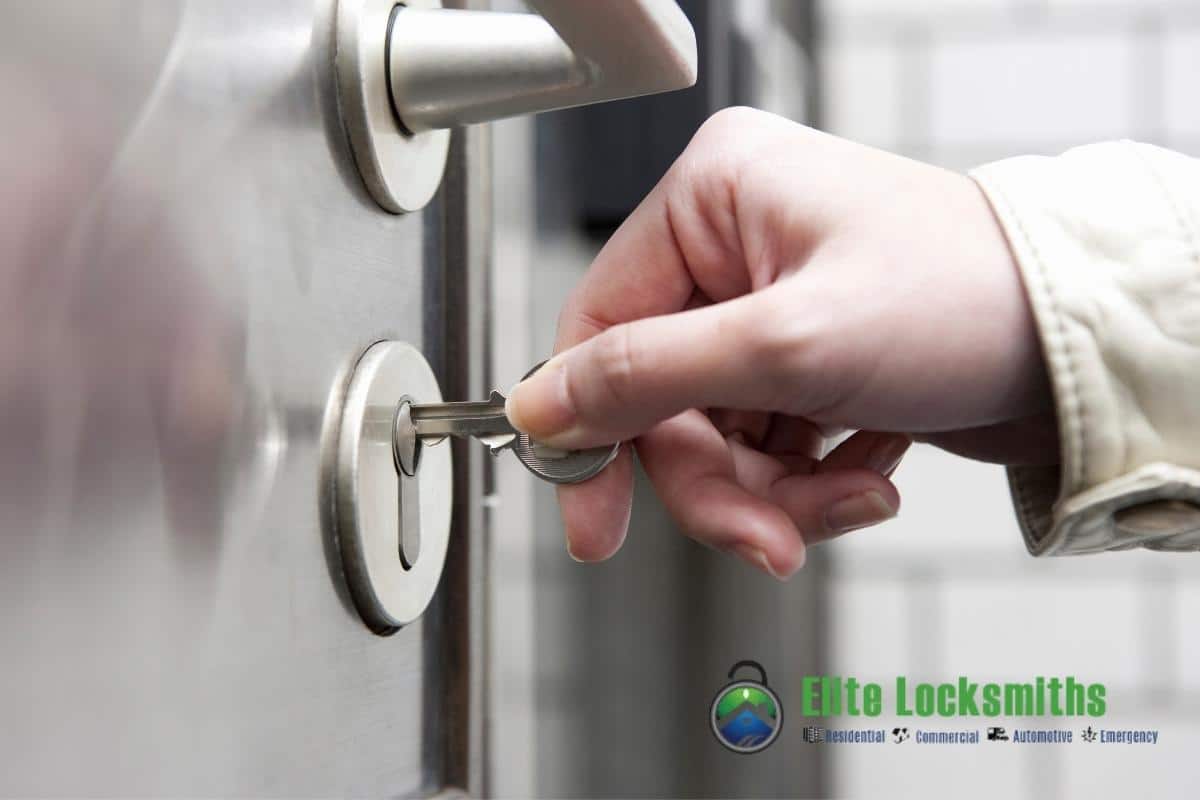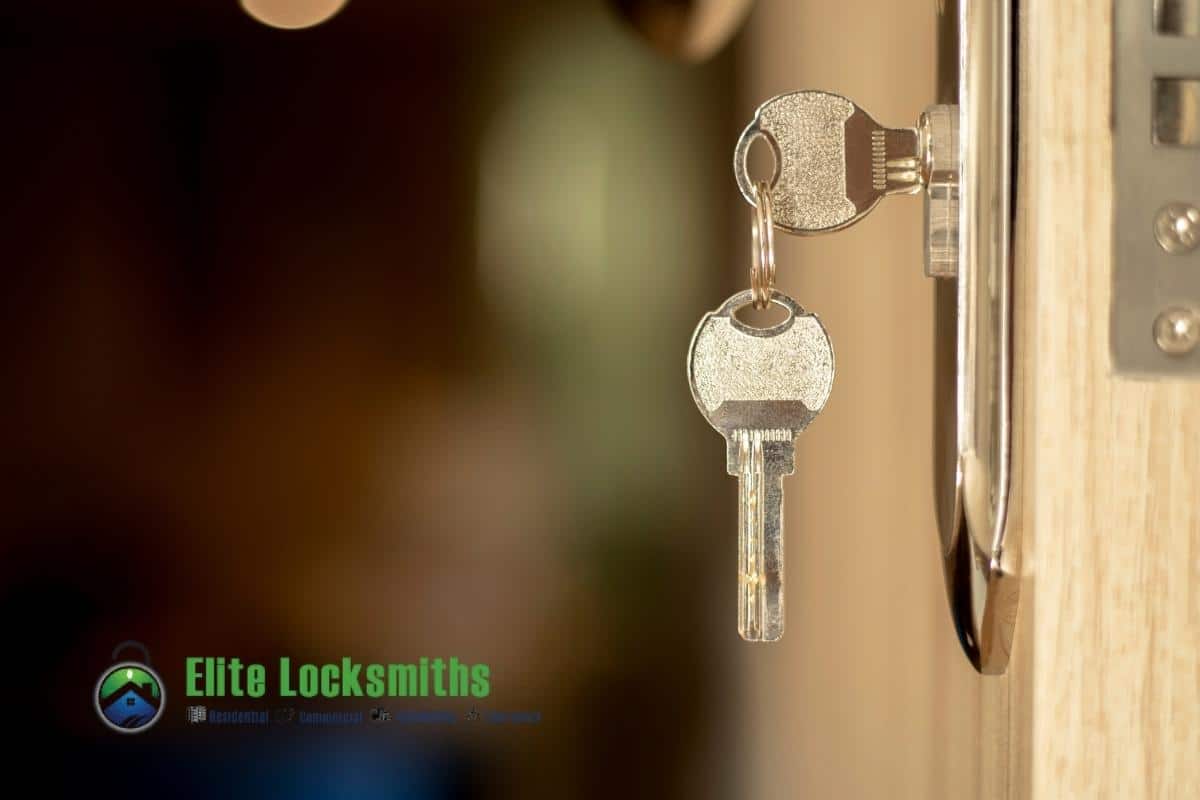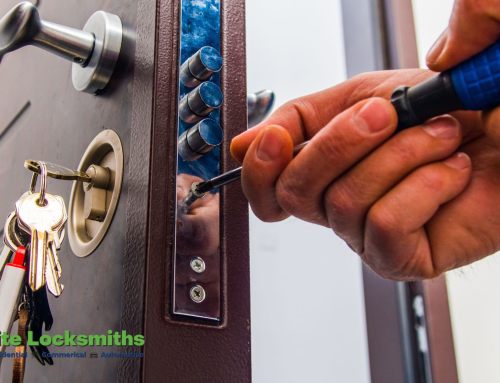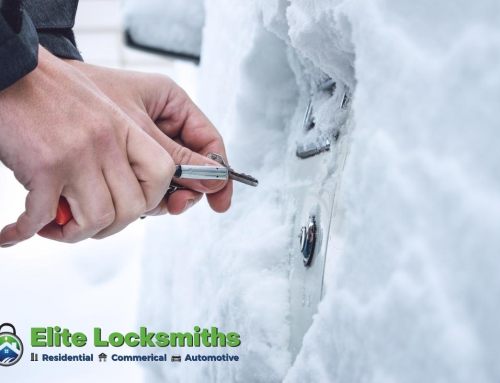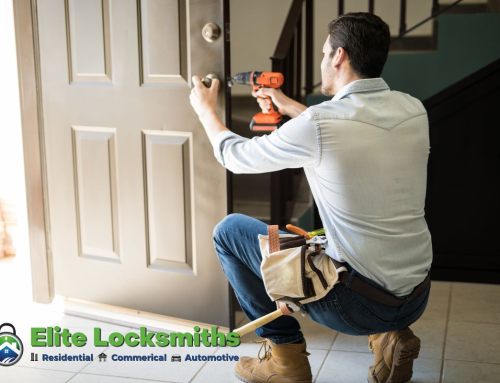Lock maintenance is essential for your lock’s security and its job of safeguarding you and your possessions. In this article, you will learn various forms of lock maintenance you may require, to clean your door locks, and keep them in proper working order. We will focus on the following essential Lock Maintenance Practices:
- Realign Lock
- Adjust the Door
- Unblock Lock
- Remove Rust
- Prevent Freezing
- Replace Key
Realign Lock
There’s a problem with the alignment of your latch bolt and striking plate if your lock isn’t opening or locking smoothly. In this scenario, lock maintenance requires a realignment.
Moreover, this lock maintenance practice will strengthen the security of the entrance door.
More force is required to lock or unlock any door with a misaligned lock. The lock hardware’s life span is reduced because of this extra force.
Misaligned locks are also dangerous to your security since they can prevent a door from locking securely.
Raising the strike plate and widening the strike hole in the door frame is the easiest method in the case of door locks. When raising the strike plate, make sure that; the new screw set holes are not overlapping or too close to the old screw holes, as it will result in loose screws that are easier to kick or pry open.
If you want to avoid drilling new holes for the strike plate, you have to expand the strike plate hole. You can do this by cutting away the metal edges inside the hole. However, keep in mind that if your lock alignment has shifted, it will very definitely shift again. As a result, this will become a regular part of your lock maintenance routine.
Adjust Door
The same issues that a misaligned lock causes will occur if your Door Sticks. However, routine lock repair will not solve the problem because the door is catching on the frame. Now you need to turn your attention to the door.
Extreme weather changes, mainly increased humidity or rainfall, cause wood to expand. Solid wood and solid core doors, as opposed to hollow core doors, have the most noticeable effects. To address this problem, the irregular wooden edges of the door will have to be shaved off.
Once you’ve found the troublesome edge, mark out all the areas that need to be removed with a pencil. Now take down the door if needed and shave it down to the proper size.
When it comes to a sliding glass door, this form of lock maintenance can be the most challenging. Any adjustments to glass doors risk harming the glass. Therefore, before removing the door, make sure the track is lubricated.
Unblock Lock
Do you have dirty locks on your hands? Dust and grime can choke the internal parts of a door lock and prevent it from functioning correctly. The build-up can occur in the keyhole, the bolt notch, or any other inner cavity in the lock.
You may have a key jammed in the lock because the keyway is getting overfilled with debris. Thus, decreasing the space available for the key to enter and retreat smoothly. The bolt or actuator can also get jammed due to debris. The area around these parts must be free of obstructions.
Unless you’re dealing with heavier debris, the best way to clean door locks is to use the correct lubricant. To clean the keyhole, use the same techniques you would use to remove a damaged key. Probing and pulling the debris out could be the most successful approach here.
Disassemble the lock for greater access when anything is jammed into a crack at the point where lubricating or other attempts are ineffective.
You can clean door locks more efficiently once this way. Probing and pulling or lubricating the difficult-to-reach regions is easier on the exposed lock parts.
Remove Rust
Removing rust is the approach most people think of when considering lock maintenance. Indeed, lock maintenance does help in preventing and treating corrosion and rust. The method of rust removal required will depend on the amount of rust you have.
An oil-based lubricant like WD-40 is enough to remove small amounts of rust. Just spray it on the required area and rub off the rust. Keep in mind that oil-based lubrication attracts dirt and dust, which might cause the lock to become blocked in the future.
If you need large amounts of lubricant; instead, try disassembling the lock and cleaning and polishing it to remove extra lube and avoid rust. If lubrication isn’t working, submerge the hardware in a solution of water and vinegar with a 5% acidity level, or try electrolysis.
Cleaning locks with heavy corrosion is usually difficult in anything other than mortise locks. It may be more helpful to change locks if there is more severe rust damage. You should also install new locks on your new home doors to keep previous occupants out.
Prevent Freezing
Locks only freeze at extremely low temperatures. Fortunately, this is rare. Frozen locks are not as common as frozen car doors. You can clean and avoid ice by using lock maintenance.
For starters, do not pour hot water on the lock. It will melt the ice, but it will also contribute extra moisture, which will cause the ice to freeze more quickly. Instead, use isopropyl alcohol, which you probably already have on hand, as rubbing alcohol or hand sanitizer.
Avoiding freezing through lock maintenance comes with a cost: oil-based lubricant decreases ice formation but attracts debris. You can keep a lock from freezing, but you risk increasing the chances of it becoming clogged with time.
Replace Key
Prolonged use of a problematic key might damage your lock. People use excessive force and jiggle the keys because worn keys don’t work smoothly. This puts undue strain on the parts and can result in a broken key or lock.
Take out your key and feel the teeth to see if this is the lock maintenance issue to be addressed. The less degradation the key’s metal has undergone, the straighter and more pointed its edges are. A clear symptom of wear and tear is that the edges of the key become relatively flattened or rounded.
It is easy to check whether the key is the issue if you have multiple keyed alike locks installed in your home. Just use the key on other locks and see if the problem persists. You can install a keypad door lock to prevent this type of lock maintenance, but you’ll still need to change the batteries regularly.
To get a new key, you will need to contact a locksmith. If you don’t have a spare key, he will have to decipher the lock before making a replacement. If you have patented locks, you can usually get a replacement key from the manufacturer.
Conclusion
You can extend the life of your lock and improve the security it provides by reducing the stress it faces. Do not allow rust or ice to build up, and don’t use a lock that has gotten more difficult to lock up. Deal with these problems as soon as they develop, before they become a problem.

